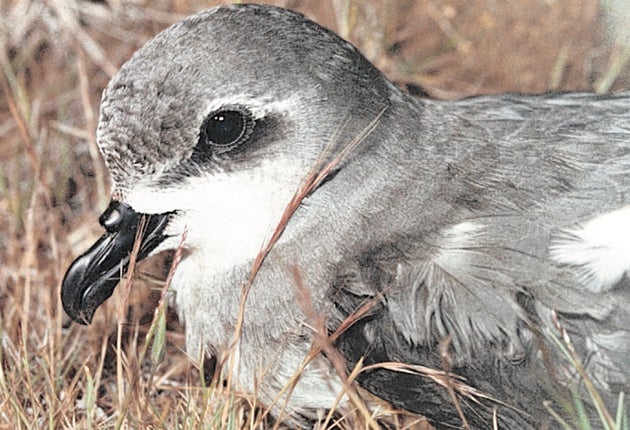Forest fires in Madeira put future of Europe's rarest seabird under threat

Your support helps us to tell the story
From reproductive rights to climate change to Big Tech, The Independent is on the ground when the story is developing. Whether it's investigating the financials of Elon Musk's pro-Trump PAC or producing our latest documentary, 'The A Word', which shines a light on the American women fighting for reproductive rights, we know how important it is to parse out the facts from the messaging.
At such a critical moment in US history, we need reporters on the ground. Your donation allows us to keep sending journalists to speak to both sides of the story.
The Independent is trusted by Americans across the entire political spectrum. And unlike many other quality news outlets, we choose not to lock Americans out of our reporting and analysis with paywalls. We believe quality journalism should be available to everyone, paid for by those who can afford it.
Your support makes all the difference.Europe's rarest seabird, the Zino's Petrel, found only in Madeira, has suffered potentially devastating losses from a forest fire which struck the birds' breeding area on the Atlantic island.
The fire on Madeira's central mountain massif killed 25 chicks – 65 per cent of this year's young birds – with only 13 fledglings found alive in their underground burrows. These remaining few will have to contend with the effects of severe soil erosion which the fire has caused. Three adult birds also died.
One of the rarest birds in the world, Pterodroma Madeira was once believed to be extinct and was only rediscovered in 1969. Since then its numbers have been down to a few tens of pairs, but intense conservation action in recent decades has seen its population grow and almost 80 pairs now nest on the island. In recent weeks, forest fires ravaged parts of Madeira, and eventually hit the heart of the central massif, whose mountain ledges support a number of endemic plants and animals (some of the wild flowers surviving because they are inaccessible to goats).
The petrels breed on ledges 5,250ft up where there needs to be enough earth for the birds to burrow and make their nests. They face numerous threats, ranging from predators such as rats and cats to habitat degradation and human disturbance: in 1991 the remains of 10 Zino's Petrels were found on one ledge, all of them apparently killed by cats. Shepherds used to collect juvenile birds for food, and egg-collectors have raided nest burrows in the past.
Late last year another threat appeared in the shape of a Nato radar station being built on the summit of Pico do Areeiro, the mountain in the heart of the breeding area. Authorities insists it is necessary for military purposes, but it is feared the building work and the station will affect the birds.
A conservation effort in the breeding area has hitherto protected the birds. "Losing 65 per cent of this year's potential young is a blow to Zino's Petrel," said Ana Isabel Fagundes, of Portugal's national ornithological society, SPEA.
Conservation teams have reinforced nests with surviving birds, and removed the bodies of the dead ones. "Burnt bushes and trees have been removed to avoid the risk of adult birds colliding with them on their nocturnal visits to feed the chicks," said Paulo Oliveira, director of the Natural Park of Madeira.
Join our commenting forum
Join thought-provoking conversations, follow other Independent readers and see their replies
Comments